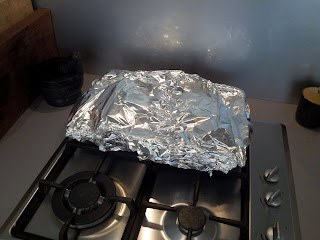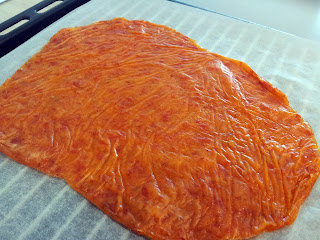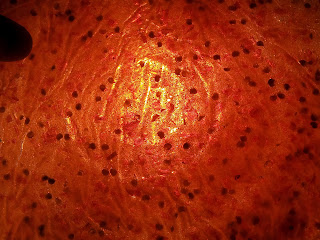
I had an urge to make some kimchi, fiery hot fermented cabbage, and as it happens, I had been working my way through
Ideas in Food recently, and there is a recipe for their version of kimchi in the book, which I did make, but I’m not posting about that batch, I wasn’t a hundred percent satisfied with it, don’t get me wrong it is tasty, and will get eaten, it’s just a bit on the fishy side for my taste. So back to the drawing board.
So less than satisfying kimchi behind me, and taking up a good portion of the fridge, I set about gathering the required information to try another lot, more traditional this time. In the search for a recipe, I came across a great blog,
Maangchi, it has a lot of good information, recipes and discussion on kimchi, so do go and check it out.
Here’s a handy tip, if you want to piss off your partner and make your house stink of cabbage, make kimchi, twice in a row!
Ingredients1 Chinese cabbage (Napa cabbage)
1 Medium sized Daikon peeled and julienned
1 Cup garlic cloves
1 Tablespoon minced ginger
1 Cup fish sauce
2 Cups hot chilli flakes (Asian supermarkets are a good place to get large packs cheap)
1 Bunch spring onion (about 7) thinly sliced
½ Cup Glutinous rice flour (also called sweet rice flour)
¼ Cup sugar
3 Cups water
Enough 5% brine (50 grams of salt per litre of water)

- Cut the cabbage into quarters lengthwise, remove most of the core, and then slice each segment into four crosswise.
- Submerge the cabbage in the brine and weigh it down with a couple of plates.
- Leave overnight (12 hours).
- When ready, drain the cabbage, and spin dry.
- Heat the rice flour and water over a medium heat, making sure to stir constantly, when it comes to a boil add the sugar and cook until dissolved. Set aside to cool.
- When cool, transfer the rice mixture to a food processor along with the fish sauce, garlic, and ginger. Process until smooth.
- Pour it into the container that you’ll be fermenting in, add the daikon, chilli flakes, and spring onion. Give it a good stir.
- Add the cabbage, and using gloved hands make sure all of the cabbage is thoroughly coated.
- Cover the container and let it sit in a cool dark spot.

The mixture should start fermenting after 2 days, but don’t worry if it doesn’t, it can take up to 6 days, it all depends on how warm it is. It should give up quite a bit of liquid, and have lots of little bubbles. The Lactobacillus bacteria present in the cabbage produces lactic acid which lowers the pH of the mixture, making it acidic and inhospitable to other nasty microorganisms, however, if you think something has gone awry, err on the side of caution and tip it out. Although, as long as it’s not slimy or fuzzy, it should be fine. The bacteria grows best in low-oxygen conditions so it’s important to keep a lid on your container.

When the kimchi has begun fermenting, transfer it to jars and refrigerate. I filled up two 1.5 litre jars from one cabbage, so unless you have a huge fridge, don’t make too much. How long will it last? I couldn’t find a straight answer on that one, some people recommend to keep it only for a month, others say it’ll last a year, I think it’ll last till it’s gone, but a bit of commonsense is in order, when it starts to smell and taste bad, then I’ll know it’s had its time.

With a lot of kimchi in the fridge, what to have it with? Everything! Well maybe not everything, the successes so far are: a sticky roasted pork belly with pickled mustard greens and kimchi; it makes and excellent topping to a hot dog; and tasty with just a plain old bowl of rice. Even the other half with her nose screwed up at the idea enjoyed its fiery heat.





















